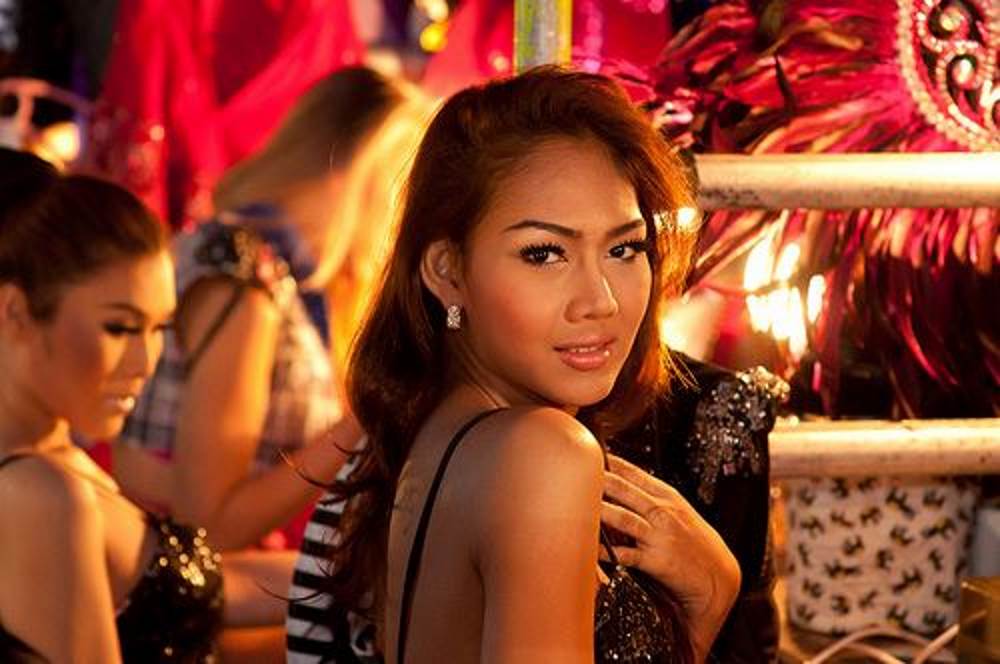Ladyboys have become more and more accepted in countries like Thailand and the Philippines. In these places, transgender people are becoming accepted by society and are being embraced for who they are.
This article will explore how ladyboy acceptance is growing in both of these countries. And why it's so important to give them the same respect we would give any other person.
Ladyboys can often be misunderstood and even feared because of their gender identity. But that doesn't mean they should be treated differently than anyone else. In Thailand and the Philippines, ladyboys are now being given more acceptance than ever before.
This article will look at how this shift is taking place in both countries. As well as why it matters to everyone involved.
Introduction: The Unique Identity Of Ladyboys In Southeast Asia
Ladyboys in Southeast Asia have a unique identity that is rooted in cultural and language differences. In Thailand and the Philippines, there are language barriers that prevent ladyboys from expressing themselves. This can lead to mental health issues, as many of them feel isolated and misunderstood.
Ladyboys are often seen as outcasts in their societies. Which adds to the struggles they already experience. The historical context of ladyboy culture in Thailand and the Philippines is complex and varied. It is believed that this culture is entrenched within the culture. With a long history of accepting gender fluidity and non-binary identities. This acceptance has allowed for an open dialogue about gender identity which has grown over time.
Ladyboys have also found solace in the arts, where they can express themselves without fear of judgment or persecution. In recent years there has been growing acceptance for ladyboys in both countries. But it still remains a taboo topic. While strides have been made toward greater acceptance. Yet there is still much progress to be made so that all members of society can be accepted regardless of gender identity or expression.
It is important to continue working towards creating a more inclusive society. A society where everyone feels safe and supported no matter who they are.

Historical Context: The Roots Of Ladyboy Culture In Thailand And The Philippines
Have you ever wondered how the idea of ladyboys came to exist in Thailand and the Philippines? What were the cultural dynamics that helped shape their presence?
In this section, we will explore the historical context of ladyboy culture in both countries and look at how gender roles. Aswell language barriers and other factors have played a part in its evolution.
Here is a list of three ways these two countries incorporated ladyboy culture:
- The Philippines has a long-standing transgender community known as “bakla”. A name that has historically been accepted by Filipinos.
- Thailand has embraced the Kathoey. A form of a transgender woman who is accepted and respected within the country's culture.
- A language barrier between both countries has made it easier for ladyboys to find acceptance in different areas.
Both countries have had an open attitude toward ladyboys since ancient times. This includes allowing them to take on roles such as entertainers, teachers, or even business owners. Ladyboys are seen as an important part of the cultural diversity of both nations. And are not discriminated against despite their different lifestyles.
With new advances in rights for LGBTQ+ individuals, it's likely that this acceptance will only continue to grow over time. With this knowledge, we can now take a closer look at Thailand's Kathoey community. And see how it differs from other countries' attitudes towards them.
| Pro Tip: |
|---|
| Looking for insights into the similarities and differences between Thai and Filipino ladyboys? Check out our article Are Thai and Filipino Ladyboys So Similar? for a deeper dive into their unique cultural backgrounds and experiences. |
Thailand: A Closer Look At The Kathoey Community
Thailand is known for its acceptance of the ladyboy community. Which comprises those that identify as transgender or gender non-conforming. Gender roles and gender identity are a major part of Thai culture. And Thai ladyboys represent an important part of it.
The cultural norms in Thailand also allow for more acceptance and inclusion of this group in society. Kathoey are accepted in many aspects of daily life. From going to school to working in different industries. It is common to see them on television and other forms of media, which has helped people understand their role and identity better.
Kathoey often times face discrimination due to their chosen gender identity. But there are many organizations in place that help protect their rights and ensure they can live without fear or prejudice. These organizations offer support through counseling, legal assistance, and advocacy work. Laws have been put into place to make sure that kathoey do not face any form of discrimination or mistreatment by employers or individuals.
The Thai government has done a lot to protect the rights of the kathoey community. Making it one of the most accepting countries for LGBTQ+ individuals in Asia. With more understanding and education about gender roles and identities. This openness could spread across the region.
Moving forward into the next section about the Philippines. Understanding the bakla and transgender population. We will further explore how acceptance plays out in different countries in this area of the world.
| Pro Tip: |
|---|
| Educate yourself on the differences between kathoey, bakla, and transgender individuals to foster a greater understanding and respect for each community. |
The Philippines: Understanding The Bakla And Transgender Population
In the Philippines, Ladyboys are accepted and welcomed in society! It's almost like being transgender is the new normal. Here, gender diversity and gender identity are celebrated, not criticized. It's so different from other countries where these topics can be uncomfortable to talk about.
The Filipino culture embraces people of all genders. In most places around the country, you'll find that people don't mind if someone identifies as a Bakla or a transgender person.
They understand that this is part of their culture and accept it. Even though there are still some cultural norms that don't agree with this lifestyle. These beliefs are changing over time.
It's amazing to see how far the Philippines has come of accepting ladyboys into their daily lives. Everywhere you turn, there is evidence of how much they value inclusion and acceptance of all people. Regardless of their gender identity or expression.
This makes them stand out among other nations when it comes to understanding and embracing those who may be different from the majority.

Without a doubt, they have set an excellent example for the rest of the world on how to accept diversity no matter what form it takes. Transitions into societal acceptance. Ladyboys are integrated into daily life in many ways in the Philippines. From participating in local events to having representation in politics and media outlets.
Societal Acceptance: How Ladyboys Are Accepted Into Daily Life
In Thailand and the Philippines, ladyboys have gained a lot of acceptance in society. They are seen as part of everyday life and are often accepted for their gender identity.
Intersectional discrimination is less common in these countries. Ladyboys are more visible and embraced in public spaces. Many examples show ladyboys integrated into daily life in Thailand and the Philippines. They work as shopkeepers, waiters, taxi drivers, and doctors.
Ladyboys are prominent in local entertainment, like ladyboy cabaret shows and nightclubs. Support groups assist with gender identity and trans visibility issues. They often lead within communities, advocating for acceptance and respect. Ladyboys promote transgender rights and visibility globally through social media and outreach.
Increased attention brings opportunities for employment, healthcare, education, and political representation. These efforts create an inclusive society where everyone feels safe expressing themselves. Greater acceptance opens new possibilities for ladyboys to thrive in Thai and Filipino societies.
Representation In Entertainment: Ladyboys As Icons In Media And Show Business
Acceptance of ladyboys is on the rise. They're becoming part of everyday life. Though, much work remains, especially in media representation. Ladyboys have turned into icons in entertainment. They're especially popular in Thailand and the Philippines. This has helped challenge traditional beauty standards, making media more inclusive.
Representation issues still exist, though. For example, ladyboys often appear as comedic relief or stereotypes on TV shows, movies, and theater performances. This makes gaining respect difficult. Many ladyboys also lack employment opportunities. This is due to inadequate education or gender identity discrimination. Despite these challenges, ladyboys have found success in the entertainment industry.
Organizations like Miss Tiffany's Universe pageant offer a platform for trans women. They showcase beauty, strength, and courage while promoting acceptance. TV shows like "What The Duck" also features trans people in entertaining roles. These initiatives challenge social norms about gender identity and expression. The trend impacts employment opportunities for ladyboys, both positively and negatively.
| Pro Tip: |
|---|
| Share stories and experiences of ladyboys in Thailand and The Philippines on social media and with friends to raise awareness and promote acceptance. |
Employment Opportunities: Challenges And Successes For Ladyboys In The Workforce
Ladyboys in Thailand and the Philippines have faced many barriers. Gaining acceptance and job opportunities is tough with so much opposition. In the workplace, they often experience discrimination and prejudice. Anti-discrimination laws aren't always enforced or taken seriously.
Despite the odds, ladyboys have made progress in employment. In Thailand, many work in modeling and performing arts. Employers have come to appreciate their unique talents and skills, opening more job opportunities for others.
Ladyboys have also become workplace rights advocates. By speaking against discrimination, they help create a bias-free environment. True equality will take time, but every victory counts towards a brighter future for ladyboys in Thailand and the Philippines.
Now, let's explore legal recognition and the journey toward equal rights and protection for ladyboys.

Legal Recognition: The Journey Towards Equal Rights And Protection
Regarding employment opportunities, another important issue for ladyboys is legal recognition. Legal recognition is an important step towards equal rights and protection.
In Thailand and the Philippines, laws recognizing gender identity are absent. Ladyboys often confront discrimination in legal matters like marriage and adoption. Despite lacking a legal framework, societal attitudes toward ladyboys have somewhat improved.
For instance, public events now celebrate ladyboy achievements through beauty pageants and talent shows. Full equality remains distant, and establishing a robust legal framework is crucial. This framework should recognize gender identity and protect all citizens, regardless of gender expression. Until then, individuals must promote change and challenge stereotypes via education and activism.
Considering equal rights and protection, love and dating also impact ladyboy relationships. Cultural stigma creates unique challenges for ladyboy relationships. Online dating websites have expanded possibilities for connections with supportive individuals. My Ladyboy Cupid is an inclusive platform for finding love without judgment or discrimination.

Love And Ladyboy Dating: Relationships And My Ladyboy Cupid
Love and dating are difficult for everyone. Particularly those in the LGBTQ+ community, including ladyboys. In Thailand and the Philippines, societal acceptance is limited. That is finding love challenging for ladyboys. Many turn to online dating and joining My Ladyboy Cupid. A ladyboy dating site that focuses on intercultural relationships.
My Ladyboy Cupid is designed for ladyboys seeking love and companionship. Created by professionals who understand their struggles. We promote finding true love despite the societal stigma. Our website's safety measures have received praise, and international news outlets have featured it. It provides potential partners and ensures respect and dignity for users.
My Ladyboy Cupid has facilitated numerous intercultural relationships and soulmate connections. It is a safe space for sharing stories and connecting with like-minded people worldwide. Though a small step towards acceptance, it is an essential milestone in the fight for equality. As more people recognize love's importance without prejudice. My Ladyboy Cupid may become a symbol of hope.
Ladyboy Tourism: A Double-Edged Sword For Acceptance And Exploitation
Ladyboy tourism has become popular in Thailand and the Philippines. While it brings money into local economies, there are many debates about the morality of this industry. On one hand, it gives ladyboys a chance to be accepted in society and make a living. But on the other hand, tourists often show disrespect for their culture and gender roles.
Here are some key points to consider when discussing ladyboy tourism:
Business regulations:
- In both Thailand and the Philippines, ladyboy bars are regulated by law to ensure that tourists don't take advantage of them.
Cultural appropriation:
- Some people argue that tourists take part in cultural appropriation when they visit ladyboy bars. As they treat them as objects of entertainment rather than respecting their culture and gender roles.
Exploitation:
- Many people worry that ladyboys are exploited by tourists who pay them for sexual services.
Economic impact:
- Despite these concerns, many locals argue that ladyboy tourism has had a positive economic impact on both countries.
While there are some potential risks associated with ladyboy tourism. It can also be a source of acceptance and empowerment for those in the transgender community. It is important that we understand both sides of this debate. In order to better regulate this industry and protect the rights of those involved.
With this knowledge, we can move forward into exploring the future of ladyboy acceptance. With prospects and challenges ahead.
| Pro Tip: |
|---|
| Want to experience Bangkok's vibrant nightlife firsthand? Check out our guide to the best ladyboy bars in Bangkok for a memorable night out. |
The Future Of Ladyboy Acceptance: Prospects And Challenges Ahead
The future of ladyboy acceptance is a shiny, but challenging road ahead. Like a diamond in the rough, it will take hard work and dedication to create true acceptance for ladyboys in Thailand and the Philippines. While there are many difficulties still to overcome. Such as prejudice and discrimination, there are also plenty of opportunities for progress.
Media activism can be a powerful tool for raising awareness about LGBT rights and issues. This kind of activism can spread the message that everyone should be treated with respect. Regardless of their gender identity or sexual orientation. Additionally, more education on diversity and inclusion could be beneficial to help people understand the concept of intersectional identities better.
It is clear that much progress has already been made when it comes to ladyboy acceptance. But there is still so much more to do before genuine acceptance can be achieved. The fight for recognition is one that must continue until all citizens are respected equally. No matter their gender identity or sexual orientation.
With continued efforts from activists, advocates, and allies, greater strides toward true equality can be made in the future.
Conclusion
Ladyboys are an important part of Southeast Asian culture. And they have made a huge impact in both Thailand and the Philippines. With the help of websites like My Ladyboy Cupid, they're able to find love and acceptance. While also finding employment opportunities. Even though there are still areas that need to improve. It's safe to say that the representation of ladyboys in media has skyrocketed over the years!
Even with obstacles still ahead of them. I'm sure ladyboys will continue to make strides toward greater acceptance and respect for their community.
Frequently Asked Questions
What Are The Legal Rights Of Ladyboys In Southeast Asia?
Legal rights for ladyboys in Southeast Asia vary from country to country. In some places, they are accepted and even celebrated. While in others they are not as accepted into cultural representations or social acceptance.
They may find it difficult to fit into traditional gender roles due to their non-binary gender identity. The legal rights of ladyboys in Thailand and the Philippines can be quite different. But many countries in Southeast Asia have adopted laws that grant them the same rights as cis people.
How Does The My Ladyboy Cupid Website Help Ladyboys In The Dating Scene?
My Ladyboy Cupid is a website that helps ladyboys in the dating scene by providing a safe and secure platform to find love. It's no secret that dating can be challenging for anyone. But for ladyboys, it can be especially tough due to cultural stigmas and identity conflicts.
This website bridges the gap between traditional dating sites and their unique needs. Providing a way for them to connect with someone who understands their struggles. With My Ladyboy Cupid, ladyboys have a place where they feel accepted. While also being able to express themselves freely and find true love.
Are The Thai Kathoey And Filipino Bakla Communities Similar?
When it comes to comparing the Thai kathoey and Filipino bakla communities, there are both similarities and differences. Both groups have a strong cultural influence. But face different social stigmas and gender roles. The kathoey community in Thailand is more accepted than the bakla community in the Philippines. The kathoey can express themselves more openly. While the bakla still faces discrimination and social stigma. Both communities have strong traditions of self-expression. Through clothing, dance, and music that is unique to their culture.
What Types Of Employment Opportunities Are Available For Ladyboys?
Ladyboys are often misunderstood and discriminated against in the workplace. And face obstacles in securing employment opportunities. With support networks and financial security hard to come by. The challenge of finding a job feels insurmountable for many. This does not mean that there are no employment opportunities available for ladyboys! From retail stores to hospitality roles, there are plenty of options out there if you know where to look. Of course, workplace discrimination still exists and must be taken into consideration when searching for a job. But with proper research and persistence, ladyboys can find the job they deserve and gain the financial security they need.
How Has The Representation Of Ladyboys In Media Changed Over Time?
The representation of ladyboys in media has changed over time due to changes in gender roles and cultural norms. In the past, there was a lot of social stigma surrounding this topic and it wasn't often talked about, let alone shown in media. Nowadays, people are more accepting and understanding of gender identity and expression. Ladyboys are now being featured in movies, TV shows, advertising campaigns, and more.
That's why it’s so important for us to recognize that everyone should be allowed to be themselves without fear of judgment or discrimination.



